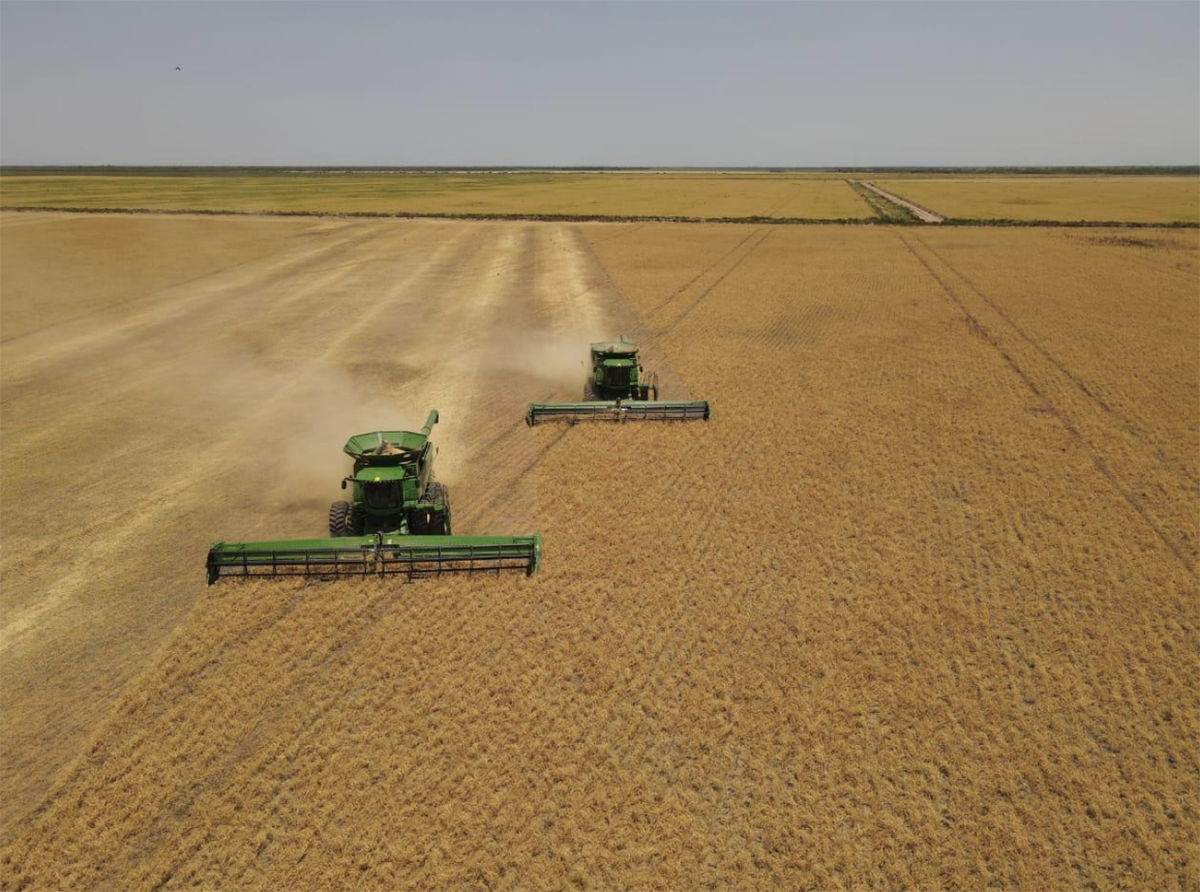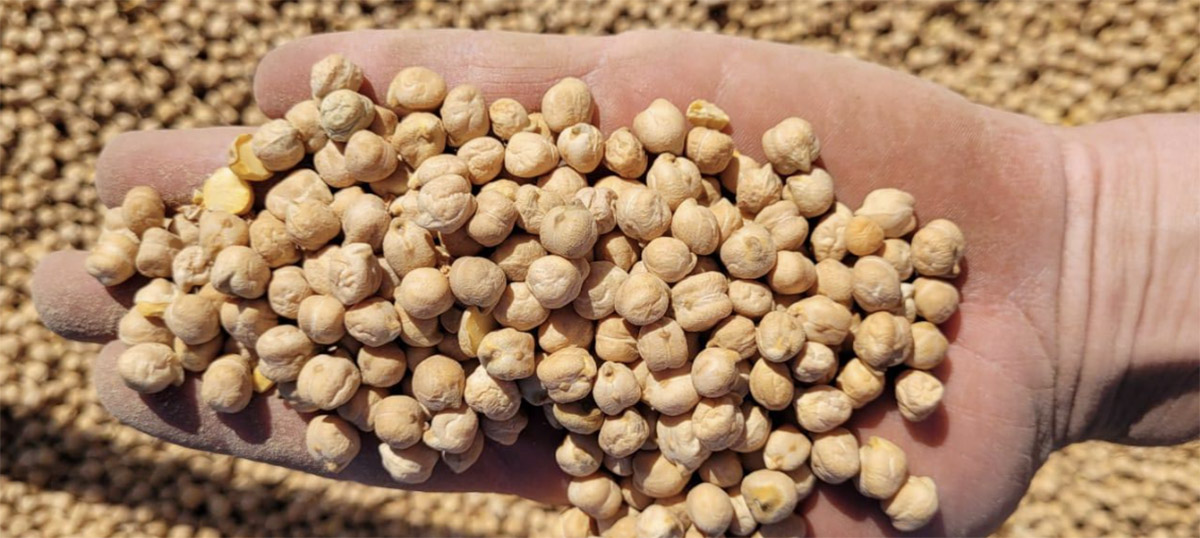November 30, 2022
As part of the GPC’s ongoing series on global kabuli chickpea markets, Navneet Chhabra and Dario Bard reached out to Desdelsur’s Matias Macera to discuss Argentina’s chickpea crop and the outlook for exports.



Photo courtesy of Desdelsur.
Matias Macera is Trade Manager at Desdelsur, Argentina’s leading chickpea exporter and a GPC Gold Partner.
As has been the case in the previous two growing seasons, dry conditions limited the number of chickpea hectares that were seeded this year. Additionally, in the northern growing area, frost events negatively impacted yields, resulting in lower-than-expected production.
Snapshot: Argentina’s 2022 Kabuli Chickpea Production
|
Ha. harvested |
51,000 |
|
Avg. yield (MT/ha.) |
1.7 |
|
Production |
86,000 |
|
Carry-in |
0 |
|
Projected exports |
60,000 |
Source: Desdelsur
Matias Macera: Argentina has two major chickpea growing areas. There is the northern region, comprised mainly of the provinces of Salta, Tucuman, Santiago del Estero and Chaco, and there is the central region, which is mainly just the province of Cordoba. In the north, there are 35,000 hectares of chickpeas and harvest progress is at around 95%. In the central region, there are 16,000 hectares of chickpeas and the harvest progress there is presently around 15%. I expect the overall harvest to wrap up by mid-December.
MM: Conditions were extremely dry. During the planting season, these conditions kept growers from fulfilling their initial planting intentions. As a result, fewer chickpeas went in the ground. At the same time, though, dry conditions usually translate into a healthy, high-quality crop. However, in the northern region, we had a few frost events at key moments that mainly impacted yields, but also resulted in some isolated lots with a percentage of immature crops and some smooth grains.
MM: All told, around 51,000 hectares were seeded to chickpeas this year, 68% of which was seeded in the northern region with the balance in the central region. Half of this year’s crop was grown under irrigation with average yields of 2.1 MT/ha. Yields in non-irrigated fields are averaging 1.3 MT/ha. This year, waste was a bit higher than last year, and we expect greater local consumption and a greater set-aside for seed as stocks are really low. If we have a wet winter, we may be able to see a return to normal volumes next year.
MM: I would say we are going to end up with a slightly lower production volume than last year. In the 2021-22 marketing year, we ended up with 71,000 MT of chickpea exports, which means we had a crop of about 90,000 MT. This year, we are estimating a crop of 86,000 MT and we project that total chickpea exports in 2022-23 will be no more than 60,000 MT.
MM: New varieties released in recent years are helping us produce larger calibers. Of the crop grown on irrigated land, we are seeing on average 50% 9 mm, 30% 8 mm and the remainder 7 mm. On non-irrigated land, we are seeing 15-20% 7 mm, 50% 8 mm and the balance 9 mm.
MM: Argentina’s domestic chickpea demand is definitely growing. We are seeing this in the demand from local canning and packaging companies and from the gourmet sector. There is growth in ready-made hummus products, in hummus products for people to prepare at home and in hummus retail brands. There is also growing demand for chickpea flour to make faina, which is a sort of chickpea tortilla that we traditionally eat with pizza here in Argentina.
MM: There is practically no carry-in at all heading into 2022-23. There are a few organic chickpea stocks remaining, but nothing significant. As I mentioned earlier, exports will not exceed 60,000 MT this campaign. They will likely end up around 55-60,000 MT.
MM: In my opinion, 50% of Argentina’s chickpea crop has already been sold, meaning about 25,000 MT remain available. Farmers are reluctant to sell, the market remains firm and freight costs are coming down.
MM: The exchange rate and inflation are two variables that, unfortunately, Argentine exporters have gotten used to dealing with. The good news is that freight costs are dropping and I expect we will see them stabilize in the coming months. Hopefully, we won’t see them collapse because in our business we need predictability.
MM: We see a firm market. The price for 7 mm product is $1,050 FOB. For 8 mm chickpeas, the price is $1,120 FOB. And 9 mm chickpeas are selling for $1,210 FOB.
If we look at the competition, Canada and the U.S. were aggressive sellers during their harvests and their prices are now higher as they have much lower stocks and strong local consumption. In Mexico, availability is down on limited water availability for irrigation and high local corn prices. Russia is moving product across the border through Turkey and through the UAE’s port of Jebel Ali.
All this tells us European buyers have limited options. It is these fundamentals that will keep the market firm and bullish, despite the fact that we are already standing on good prices.
MM: I would also like to mention what is happening with the global desi market because it contributes to the firmness of the kabuli market. Desi prices, which are well below kabuli prices, have begun to improve. In Australia, excessive rains have knocked down desi chickpea yields and impacted quality. As markets respond, desi chickpea sellers are holding onto product. This contributes to the overall firmness of chickpeas in general. Moving forward, the focus is now on India’s rabi season crop, which will be harvested in March.
In closing, I’d like to thank the GPC for providing this sort of information to the industry. At Desdelsur we have no doubt that the present is bright for pulses and that a bigger, even brighter future is to come.

A sample of Argentina’s 2022 kabuli chickpea crop. Photo courtesy of Desdelsur.
Disclaimer: The opinions or views expressed in this publication are those of the authors or quoted persons. They do not purport to reflect the opinions or views of the Global Pulse Confederation or its members.